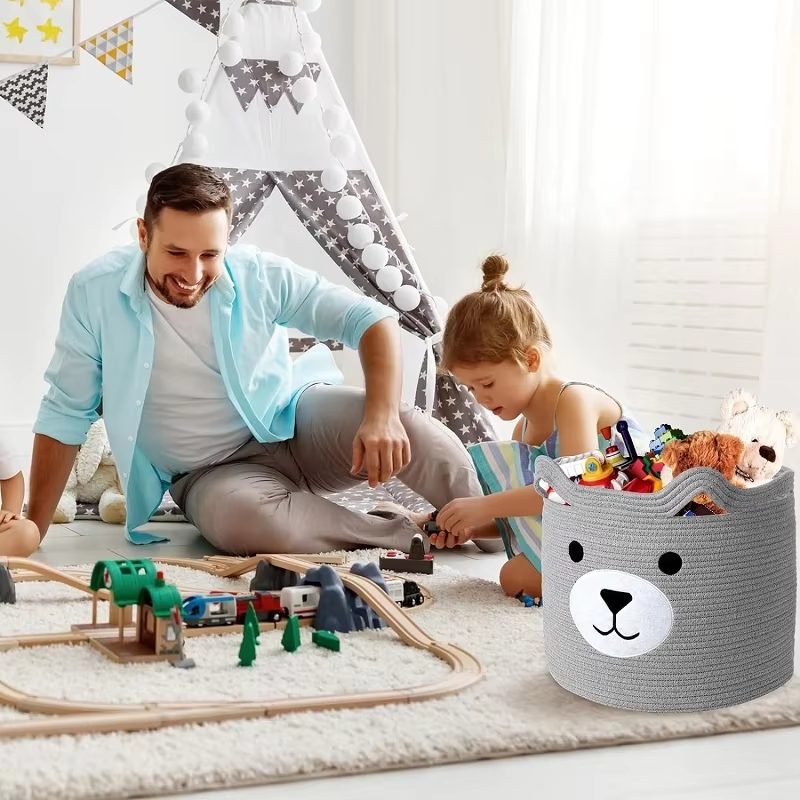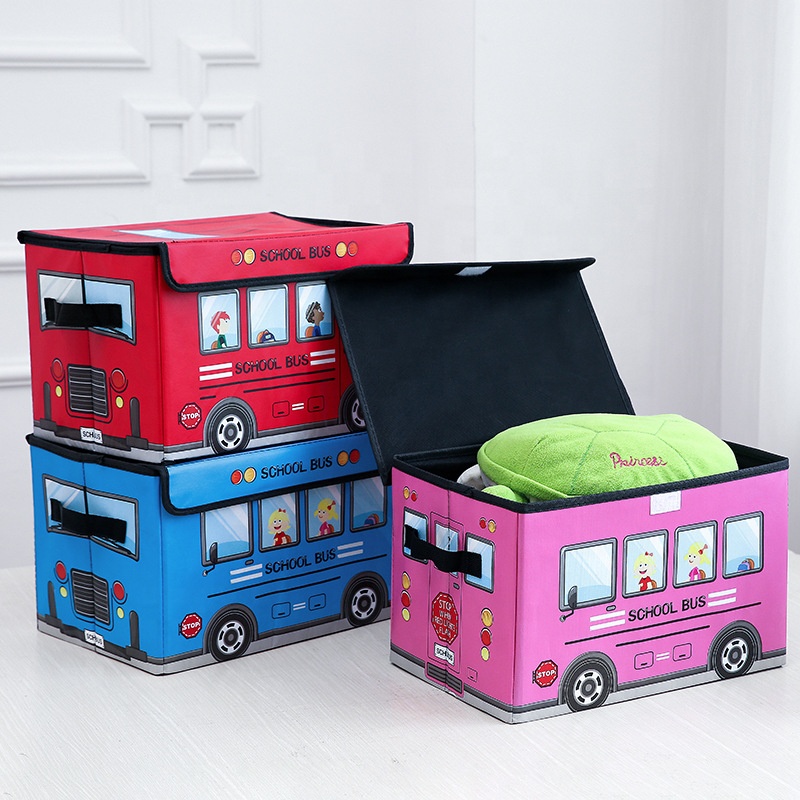Toys make up a big part of childhood. They inspire imagination, support
learning, and bring fun into everyday routines. But as any parent knows, they
can also create chaos in a home if left unorganized. Finding the right toy
storage box can make all the difference—not just in keeping a room tidy, but in
teaching kids to manage their things and giving you some peace of mind.
Before buying storage, observe your child. Do they enjoy sorting and organizing, or do they dump everything into one pile? Are they into large plush animals or tiny building blocks? This matters more than you might think. Children who play with lots of small items may benefit from storage that has divided sections or built-in compartments. Those who like larger toys might need deeper bins with soft sides.
Think also about their habits when cleaning up. Younger children may need
open bins on the floor. These allow for quick access and easy cleanup. Older
kids may enjoy a bit more structure, like drawers or boxes with lids and labels.
The goal is to match the storage method to how your child plays.
No two homes are the same. You might have a full playroom, or just a corner of the living room. The amount of space available will shape what kind of storage box works best. In small areas, stackable storage boxes or units that slide under the bed can be a smart use of space. Boxes that fit neatly inside closet shelves also work well when you're tight on room.
If you have more floor space, larger boxes or multi-bin organizers can keep
things within reach without making the room feel cluttered. Foldable storage
solutions are especially helpful in households that rotate toys or rearrange
rooms from time to time.
When children are involved, safety is non-negotiable. A good toy storage box should be soft enough not to cause injury, but sturdy enough to hold toys securely. Avoid any box with sharp corners, rough edges, or heavy lids that can pinch fingers. For young children, fabric boxes with reinforced sides are often ideal. They're light, flexible, and still hold their shape well.
Boxes made of breathable fabric also help prevent odor buildup, especially in more humid areas. And if the box comes with handles, make sure they're stitched securely so kids can carry their toys without the risk of tearing or spilling.

Open-top bins work great for toddlers and younger kids. They can see what's inside and easily toss their toys back in when playtime is over. These types of bins make independent cleanup much more likely. On the other hand, closed storage boxes help reduce visual clutter. They're great for keeping things neat, especially in shared areas.
It's also common to find boxes that offer both functions—open for everyday
use, and closed for keeping things out of sight when needed. Some even come with
lids that flip open easily or attach with velcro, offering a balance between
accessibility and tidiness.
It's easier to clean up when every toy has its place. Use different boxes for different toy categories—one for blocks, another for cars, and another for art supplies. Storage boxes with transparent windows help children find what they're looking for without opening each one.
If the boxes aren't clear, you can add labels. Picture labels work well for
younger kids. Older children can read simple tags. Some designs even include
built-in label holders, so it's easy to change the label when the contents
change. A good labeling system builds habits and teaches responsibility without
much effort.
Different materials serve different needs. Plastic bins are strong and easy to clean, but they may not blend well with softer home decor. Woven baskets look nice but might not hold up to heavy toys. Fabric storage boxes strike a nice balance—they're soft, lightweight, and available in a variety of colors and patterns.
If your storage will sit on the floor, go for something with a rigid bottom so it holds shape. If it will be moved often, make sure it has handles. And if it will store messy items like crayons or clay, make sure the material can be wiped clean or even washed. Some storage bins are built with durable, wipeable fabric and reinforced seams—ideal for active households.

The best storage is the kind your child will actually use. Complicated boxes with tricky lids or zippers are more likely to be ignored. A child should be able to pull out, open, and put away a box on their own. Lightweight materials and floor-level placement help with that.
Also, think about maintenance. Will you need to clean it regularly? Does it
fold down when not in use? Boxes with foldable designs are perfect for rotating
toys or storing away items your child has outgrown. Some even come with
removable compartments inside for sorting small items.
Organization isn't just for parents—it's something children can learn too. A simple system of labeled bins can help children understand order and build good habits. Use colors, shapes, or tags to indicate categories. For instance, a blue box for cars, a yellow one for books, and a green one for action figures.
This not only makes cleanup faster but also turns it into a game. Some
parents even assign “cleanup music” or “five-minute challenges” to encourage
participation. A well-chosen toy box can do more than store—it can teach,
engage, and encourage responsibility.
Certain types of toys call for specific storage solutions. Trying to fit everything into one big box usually doesn't work. A few targeted choices can keep things neater and more practical.
Here's a simple pairing guide:
Soft toys and plush animals – Deep fabric bins or baskets with breathable sides
Building blocks or Legos – Boxes with dividers or stackable trays
Books – Open-top bins that allow easy reach and spine visibility
Art supplies – Lidded containers or multi-compartment boxes
Puzzles and games – Slim boxes with internal pockets or zippered storage
Rather than overbuying, start with three or four targeted solutions and build
from there. This allows you to adjust as your child's interests change.
Not every home has a separate playroom. In shared areas like the living room, appearance matters more. Bright plastic bins might do the job, but they can disrupt the overall decor. That's where softer fabric boxes in neutral tones come in. They look clean, modern, and don't scream “kids' stuff.”
Some bins double as footrests, side tables, or ottomans. Others have lids and can be tucked onto shelves or into corners without drawing attention. When toys need to live in common areas, storage should feel like part of the room, not something to hide.
Neutral colors like gray, beige, or soft blue help toy storage blend in. Minimalist designs with subtle textures work well for homes where adult and kid spaces overlap.

A few small missteps can turn even the best storage system into a headache. One mistake is choosing bins that are too large. Big boxes become dumping grounds where toys get buried and forgotten. Another is focusing only on looks. A pretty box that's hard to use will sit empty.
Also, don't ignore the weight of the box. If it's too heavy, your child won't
use it. Don't buy too many different sizes either—it becomes hard to stack or
fit them into your space. Finally, always check whether the box is easy to
clean, especially for younger kids who may store wet or messy items inside.
A toy storage box isn't just about keeping a room tidy. It's about making life easier for both kids and parents. The best choice fits your space, matches your child's habits, and evolves as their needs grow. Whether you're storing plush animals, art supplies, or puzzle pieces, there's a smart solution that makes the process smoother.
Skyze Home understands the real needs of modern families. Their fabric toy storage boxes, collapsible bins, and functional organizers are designed to be practical, safe, and visually appealing—making it easier to keep your child's space neat, comfortable, and clutter-free.
For product inquiries or collaboration, contact us at jack@tzcraft.com or visit www.skyzehome.com.